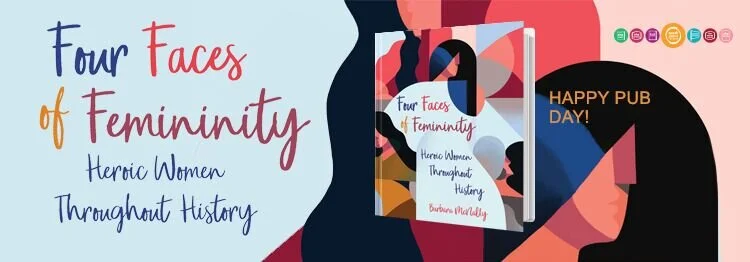Part 8: Moving Forward
While it is sometimes challenging to be honest and raw about aspects of our journey, the more we open up the better we can see our lives from a different perspective and make clearer decisions going forward. Putting our experiences into words transforms and heals.
With that in mind, here's the final post in my series on the power of storytelling. Every journey of 1,000 miles begins with the first step. Let’s begin writing the stories of our lives whether we publish them or not. In August, I'll be leading a writing workshop for the wives of wounded warriors in partnership with Hearts of Valor, and will dig even deeper into these themes! If you're interested in attending, you can apply here to join Hearts of Valor.
But for now, let's talk about how exploring your story can help you release pain and find closure.
Getting “unstuck”
The events of our pasts can cement us in place. When we've been hurt or demoralized by painful experiences, we may use defense mechanisms and survival tactics to cope. But the true, deep healing can only begin once we've put in the time and energy to truly understand and process what happened. Storytelling is a simple and effective way to kick-start that deep healing. Looking back, teasing meaning from distressing events, exploring them honestly, and re-casting them in more positive terms can help us get “unstuck.” When we make peace with our pasts, only then can we move forward.
An essential element of moving forward is feeling empowered to make conscious choices. A troubling past can make us feel helpless and immobile. Releasing that past reminds us that we have control, and the choices we make guide our lives!
Exercise: Contemplating choice
This writing exercise explores the power of choice. Imagine you are standing at a crossroads, having arrived there on foot. You now have three options, and should explore them all before committing to one. So ...
Take a step back. What this would mean for your life? What would be good? Bad? Different? Write it all down.
Take a step forward. What does moving forward mean for your life? What would be good? Bad? Different? Write it down.
Finally, stay put exactly where you are. How does this manifest in your life? What would be good? Bad? Write it down.
Which of those three options felt right? Which one resonated, which path seemed the most natural or positive or exciting? Write about your choice, and explain why you made it.
Now imagine that you are nearing the end of your life. You have done all you wished to do, accomplished everything you'd hoped to achieve. Ask yourself:
How do I feel? Write it down, and be honest.
What was the happiest moment in my life? What person, experience, or accomplishment gave me the most satisfaction and contentment? Write this down as well.
Now imagine you have traveled back to your today-self. Can you identify what you most valued in your life? What brought you the most meaning and fulfillment? What choices did you make that shaped your life in positive ways?
Visualizing your possible future can help you lay the groundwork for things to come. All actions stem from choices, and the choices we make determine the paths our lives take. What choices can you make now to ensure a rewarding and positive future? You cannot control everything, which means that negatives will always work their way into your life. But envisioning yourself as the master of your own destiny makes it easier to manage those negatives when they arrive.
Ending a chapter
One way to make peace is to create closure. Once you've closed the door on a scarring experience, you're free to walk away and begin again. You're free to choose your next steps and shape your journey, actively and mindfully.
Through my own work, I've found that honest, open, exploratory writing can be a priceless tool for understanding ourselves, processing our experiences, and promoting real growth. If you've taken the time to do any of the exercises I've shared over the past weeks, I'm sure you've made tremendous strides on your own journey, too.
Hope you've enjoyed this series! And again, if you'd like to join me for the August retreat, apply here to join Hearts of Valor.

